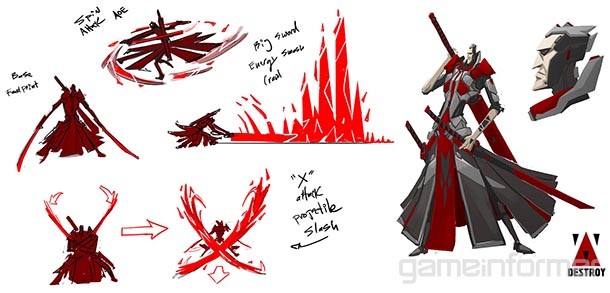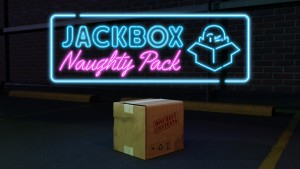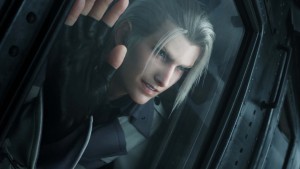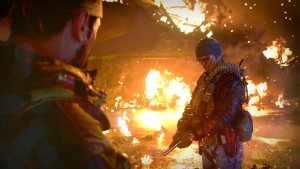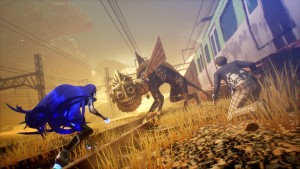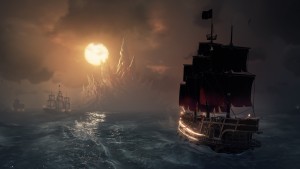Please support Game Informer. Print magazine subscriptions are less than $2 per issue
A Guided Tour Of Battleborn's Art

Thanks to Borderlands, Gearbox's original IP are known as much for their art styles as their gameplay. For Battleborn, the developer is once again aiming for a distinctive look, one that can accommodate the immense creative variety present in the game's universe-spanning cast of heroes. Join us as several Gearbox artists and animators walk us through some of Battleborn's concept art and explain why they're excited to be working on the new project.
Battleborn's art director, Scott Kester, was kind enough to provide his thoughts on several pieces of concept for the game, which you can see below. Kester served as a character concept designer for the first two Borderlands games before taking the reins for Battleborn, and his comments provide great insight into the creative process and goals that Gearbox's art team is striving for.
We've also included quotes from several other Gearbox designers and animators, who we spoke to while visiting the studio. Nick Wilson (who stymied me with a Borderlands Easter egg way back in the day) is Battleborn's lead visual FX artist, and he explains how his team's work helps make each character feel unique while unifying the art style as a whole. Additionally, animation producer Trey Davenport and senior animator Dia Hadley explain their approach to bringing Battleborn's eclectic characters to life.
Finally, Gearbox has brought on Michel Gagne to serve as Battleborn's effects director. Gagne is an accomplished animator who has worked on dozens of feature films, including The Iron Giant, Brave, and the Star Wars: Clone Wars television series. Gagne's hand-animated art style is unmistakable, and after he entered the video game industry with 2011's Insanely Twisted Shadow Planet, Gearbox jumped at the chance to work with him.
You can click on each piece of concept art to view a larger version of the image.
Kester: This is an early concept of the Jennerit Empire's home world. My goal is for people to be shocked when they see this game and the variety of content that's in it. We have these factions, and hopefully when you get a look at somebody, you get an idea of where they're from, and when you see the world they come from, they should feel at home there. I hope that when you see art like this or you see Rath or Calderius in this world, you say, "Okay, that's where this guy is from." It looks unified but could almost feel like different games. When I see what we're building here, you'd think a whole game would be wrapped around that, and it would just be sci-fi, gothic-cathedral TRON land, but that's just a section of what we're doing.
Kester: It was important to us to make the minions iconic. We tried to give a look that was understandable and approachable and made sense within our world. He's kind of cool, kind of badass, but at the same time he's kind of silly. We tried to give them an aesthetic that had a lot of character and style, but wasn't just a joke.
Kester: We knew we wanted a spider-mech because we all love spider-mechs and we all love robots, but we needed to find a way to give them a certain charm and a little personality. We added humanistic qualities to them. Why would you ever make a robot that has human hands when it doesn't need them? Why wouldn't it just have guns mounted to it? Well, because it's cooler to have the robot actually hold something.
Davenport: What's really important in the central animation team, is that we're big on ownership. So when somebody gets assigned a character, there's always an owner...whoever owns that character helps bring different identities to the characters that come into the pipeline. While we keep the [animation] style consistent by working with everyone as a team, we're also able to give each character a unique identity simply because everybody has their own visual take [on their own characters].
Hadley: When we first started Battleborn, [we had] the silhouettes of all the characters – the first 15 characters or whatever – and [I remember] how different they all were. When I first looked at them, as an animator, you start drooling – especially when the tech guys say, "Hey, we've got all sorts of memory you can use." And we were like, "Alright, every [character] will have their own animation set, and their own – everything." So, just the run cycles alone...everybody has a distinct run cycle, so if you see a character running out of the corner of your eye, you can distinguish who they are right off the bat.
Coming Up Next: Gearbox discusses the importance of visual effects and establishing the tone of Battleborn...
Kester: The Varelsi are odd looking but ultimately sinister. They're very alien at the same time. Games are so flooded with alien guys that pull from the same inspirations, and I really wanted to take this opportunity to try something with silhouettes. We wanted to de-humanize them, and make them a faceless entity. When you see them in the context of the game, you just know that they're bad guys, that something's wrong.
Wilson: One of the first times that the art style came really together for me and started to really make sense, was Scott had concepts for Rath and his slam attack – that super angular, polygonal thing that comes out of the ground. That was one of the first times that I had designers coming into my office and being like, "I understand what this game looks like now; this is Battleborn."
Wilson: We're taking a totally different approach to Battleborn than we did with Borderlands. With Borderlands, even though it's a ridiculous game with heads exploding and stuff, it's very much grounded in reality when you look at the visual effects; you don't see the same stylization that you do with everything that we're doing in Battleborn. Part of the way that we're able to make these unique characters feel different but fit within the same universe is understanding that core vision while also handing off individual character effects to separate effects artists.
Kester: The effects of Battleborn are as much of a character as the characters themselves. Early on, it was a big target of mine to put a lot of style into the effects. Really, the effects and animation are the glue that holds the entire game together. To me, a first-person shooter is all about the interaction of bullets or blades or weapons with something in the environment. How do you sell that? You sell that with effects. We use the effects as an extension of the characters themselves. By trying to put a little bit of 2D into 3D, and by key-framing and hand drawing these things, it ensures a character that's always there. We want you know "that's that explosion." It's Oscar's grenade explosion, its Rath's energy wall. You always know what it is. These images are where we started from, and Michel's gone from there.
Gagne: I got really involved in the making of a game when I made Insanely Twisted Shadow Planet, where now I was actually like the co-creator...After I finished that game, one of my goals was the next time not to do a 2D game, but to now bring my type of animation into a 3D game. So when I went to Gearbox, I remember talking to Scott, and I told him, 'Man, this project, this is what I've been looking for, this is exactly where I wanted to take my animation.'
Gagne: One of the things that's going to be cool are the visual effects [going] beyond the characters, using effects in the environment – like the waterfall that we're working on right now – to make some of that stuff look almost like an animated feature film.
Kester: These are initial speed paints I did to establish shapes and tone from a high level. This was really myself and the art team trying to wrap our heads around the forms in this game...
Kester: These are really focused on silhouettes. I feel like any good game art has really strong silhouettes. If you're only looking at the surface of something, you're probably not appreciating the scene...
Kester: These paintings speak to the way the pieces are set; the way you're framing a shot and the lighting and the contrast between those things. They're kind of simple at first glance, but I feel like they tell a lot and they informed where the artists went from there.
For a more cohesive look at how Battleborn's art, animation, and visual effects come together, check out the announcement trailer. For more on the game, including a ton of hands-on impressions, enter our Battleborn hub by clicking the banner below.






